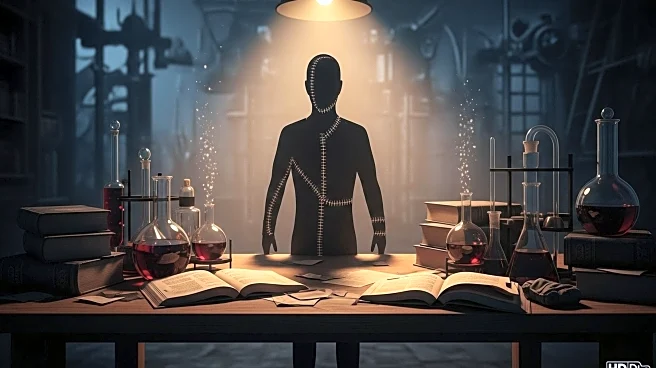What's Happening?
Netflix has released the first official image of Frankenstein's monster from Guillermo del Toro's upcoming adaptation of the classic Mary Shelley novel. The monster, portrayed by Jacob Elordi, is depicted with a unique aesthetic that diverges from traditional portrayals. Del Toro, known for his distinctive visual style, has crafted the monster to resemble a jigsaw puzzle, avoiding symmetric scars and sutures. He aims to present the creature as a beautiful, newborn entity, rather than an accident victim. The film, co-starring Mia Goth, Felix Kammerer, and others, will be available in select theaters on October 17 and on Netflix starting November 7.
Why It's Important?
Guillermo del Toro's adaptation of 'Frankenstein' is significant as it offers a fresh take on a classic story, potentially attracting a new audience to the tale. Del Toro's unique vision and the casting of Jacob Elordi may bring a modern and sympathetic portrayal of the monster, challenging traditional perceptions. This adaptation could influence future interpretations of the story and contribute to ongoing discussions about the nature of humanity and creation. The film's release on Netflix also highlights the platform's role in distributing high-profile projects, impacting how audiences access and engage with new cinematic works.
What's Next?
The release of a new trailer on October 1 will provide further insights into del Toro's vision for 'Frankenstein,' potentially generating more interest and anticipation for the film. As the film approaches its release dates, reactions from critics and audiences will likely shape its reception and influence its success. The adaptation may also spark discussions about the themes of creation and identity, resonating with contemporary societal issues. Stakeholders in the film industry will be watching closely to see how del Toro's interpretation performs both critically and commercially.
Beyond the Headlines
Del Toro's approach to 'Frankenstein' may prompt deeper reflections on the ethical dimensions of creation and the responsibilities of the creator. By presenting the monster as a sympathetic figure, the film could challenge viewers to reconsider the nature of monstrosity and the societal factors that contribute to it. This adaptation might also influence cultural perceptions of classic literature, encouraging new interpretations and adaptations that explore similar themes.










